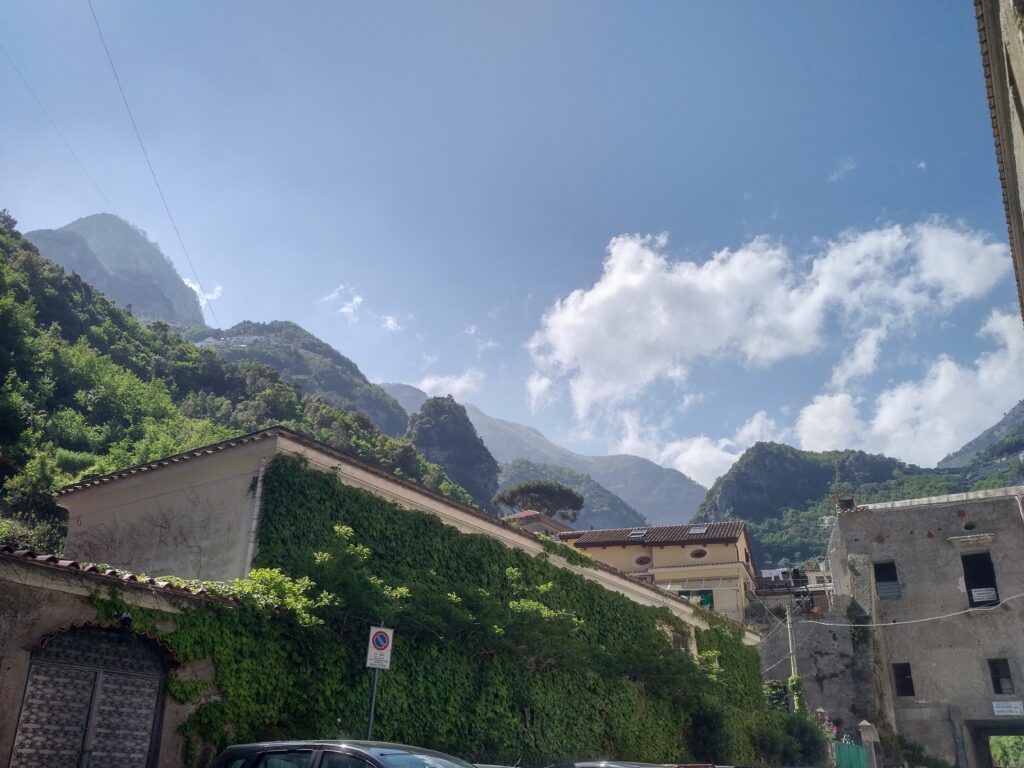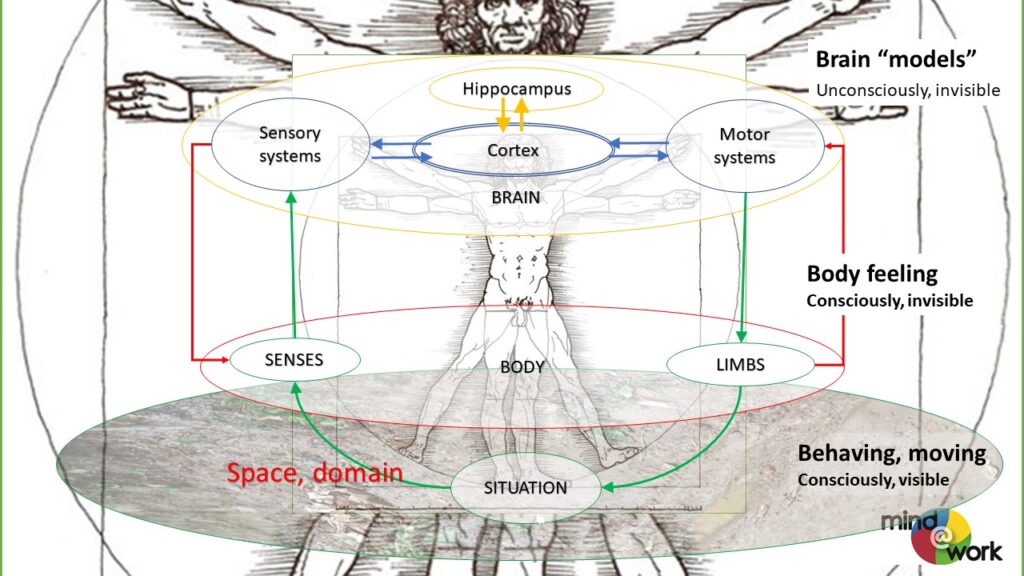I was just this morning writing to a friend that natural structures structure themselves. Then I ran into a piece about design not using complexity theory. I think these issues are related.
Facilitating complexity comes naturally to me, because I don’t intend to control anybody while facilitating. Nature facilitates herself in the same way. She doesn’t have a choice.
Nature natures nature
In nature form structures (or follows) structure and structure forms (or follows) form. One can distinguish the form or shape of clouds. mountains, trees, …. from their structure. They model themselves. Their shape or form is what they are and how and why one recognizes them,
These follow the “Law of the Least Work” (least action, least resistance, …). The least known of the laws of Physics.
The Law of the Least Work “makes” a projectile follow parabola, and we explain why a projectile makes a parabola. It is as-if the projectile “knows” what path to follow, naturally. Nature “knows”, without explicit knowledge, how to structure herself.
Nature “designs” herself. Any sign (cloud, mountain, tree, … ) signifies it/her/him/them-selves. That’s why they’re all unique – having different shapes – and are having the same “structure”. The latter may come as a surprise, as I’m using the word structure in a slightly different way.
Structure structures structure
The structure – the ways a form has structured it-self – of a natural thing or creature accounts for its usefulness. The shape of a tree “fits” a tree. The structure of a bird’s shape, follows its use. A lark won’t chase rabbits, a vulture won’t scratch with the chicken. Use, shape or function, and structure invoke each other. They’re self-shaping shapes, self-froming forms.
(This makes me think, why we use the word information for …mmm… information. Form informs. We recognize things by their shape or form.)
Like the ways on a map show (you) the structure of the city streets. (Reversing Korzybski’s “the map is not the territory”). Structure (of a model) accounts for it’s usefulness. This is one of the reasons I use the words metaphor-in-use for what you perceive. Tacitly one recognizes uses of a form or shape.
These – in our idea of design – complex natural forms or shapes are actually also the simplest. They cannot be different, because of the Law of the Least Work (I know, it sounds like a fallacy). Any other (more complex) structure would have meant “more” work.
The interesting thing about the “laws” of nature – all these laws are human laws -, is that they maintain themselves. There’s no “least work” police, advocate, judge or even punishment. I could call it “Occam’s Reaping Machine” or better, “Occam’s Harvester” :-).
Human rules induce complexity
Human designs follow rules prescribed by humans. In our concept of design design should be “fit for function”. Things have an intended purpose. We tend to think, for instance, that the beaks of birds have a function. To eat seeds, insects, build a nest, … . Or that the function of one’s hearth is to pump blood. But birds have beaks; you’ve got a hearth. One wouldn’t live without them. They were designed by themselves.
Animals make sound to recognise each other and to signal situations to each other. Human being expanded this into language. As we’ve learned to use language to instruct (long story, no time for it now) to make constructions – called artefacts, because they’re arty-ficial and not nature-ficial – we tend to think in terms of principles, rules, laws with a purpose, with de-sign.
One can only have a theory on design, when having a language. But the structure of our language (artificial: order, rules, linear, static, ..) doesn’t accommodate for the structure of nature (nature-ficial: out of control, chaotic, dynamic, ….)
Things have become “complex”, because living lives is not simple any-more. Using language made our life complicated. Machines make it complex. Thanks to the printing press and the computer, we’re able to complicate complexity. I like to say, “we used to have language and now language has us”.
Understanding complexity
Simply put: complexity theory in design is an oxymoron. Complexity is in a way natural, practical, universal and “undesigned”. Our designs, paradoxically, are too simple, that’s what makes “complexity”. Nature abhors complexity. We introduce complexity in judging a situation we cannot decompose in elements, and put back in working order again, like our machines. We cannot analyse complexity with logic, analytical, logical analysis.
Complexity is fragile and nature is anti-fragile. We attribute complexity to a situation, when we cannot decompose into parts. We want to understand a system AND control it.
Artwork is, the words says so, artificial. We design things which have uses, functions, which mimic nature. We design intentionally. Intentions, designs, have to be realized or we’re “unsuccessful”. Nature doesn’t intend, yet realizes everything successfully.
We call something we cannot understand and control “complex”. Letting go of control, while understanding, produces complexity. Let a situation control itself. It will produce results naturally.
I want to stress, that I don’t see these issues as problems. We cannot “solve” these. They’re paradoxes and will resolve themselves. Paradoxes are “at work” (or “energetic”) and as one tends to exclude paradoxes from thinking, it will take some time. Thanks for reading this.
Implications for facilitating groups
Everybody wants both to remain in control of their own decisions and needs to be “heard”. The trick to effective facilitating participants is by letting go of control. Define a result in general terms, like the three best ways to …, or five possible actions…. or a statement about … .
Always prepare yourself thoroughly. I always have a detailed plan, with the questions I’m going to pose. I never realize the plan, but always get results. In time. Because I allow myself to “go with the flow”, knowing I’m having my plan.
The purpose of facilitating a session is facilitating participants exchange metaphors
All thinking is metaphorical. As professor Homan of the Dutch Open University wrote in one of our books on facilitation (Diverging Conversations through Facilitation). If a meeting has an objective, a purpose, it’s not facilitating. You then need a good chair person, a trainer, a consultant. Not a facilitator.
Many stories in this book, are about figuring out the different metaphors, images, meanings behind the words used to describe a situation. When the situation is complex, the metaphors will show ways and means to reach results naturally.
The practice of facilitating consist first and foremost of making sense of the meeting. So in facilitating always look for the metaphor-in-use behind the metaphor-espoused. Which image do participants have with what they’re talking about?
- I usually ask which metaphors (usually several) participants would use to describe their situation. Because these “carry” their meaning and “make” them work .
- Then I let them visualize a few – I call it “configuring”, making a figure-of-speach. I sometimes intervene, when asked.I usually only repeat words they’re using.
- I invite them to exchange their metaphors to each other, what do they have in common?
- After writing down a summary statement, I ask them what they would do differently (tomorrow,…. ) and,
- one of my trademark questions, “what would you do if it doesn’t work?”














